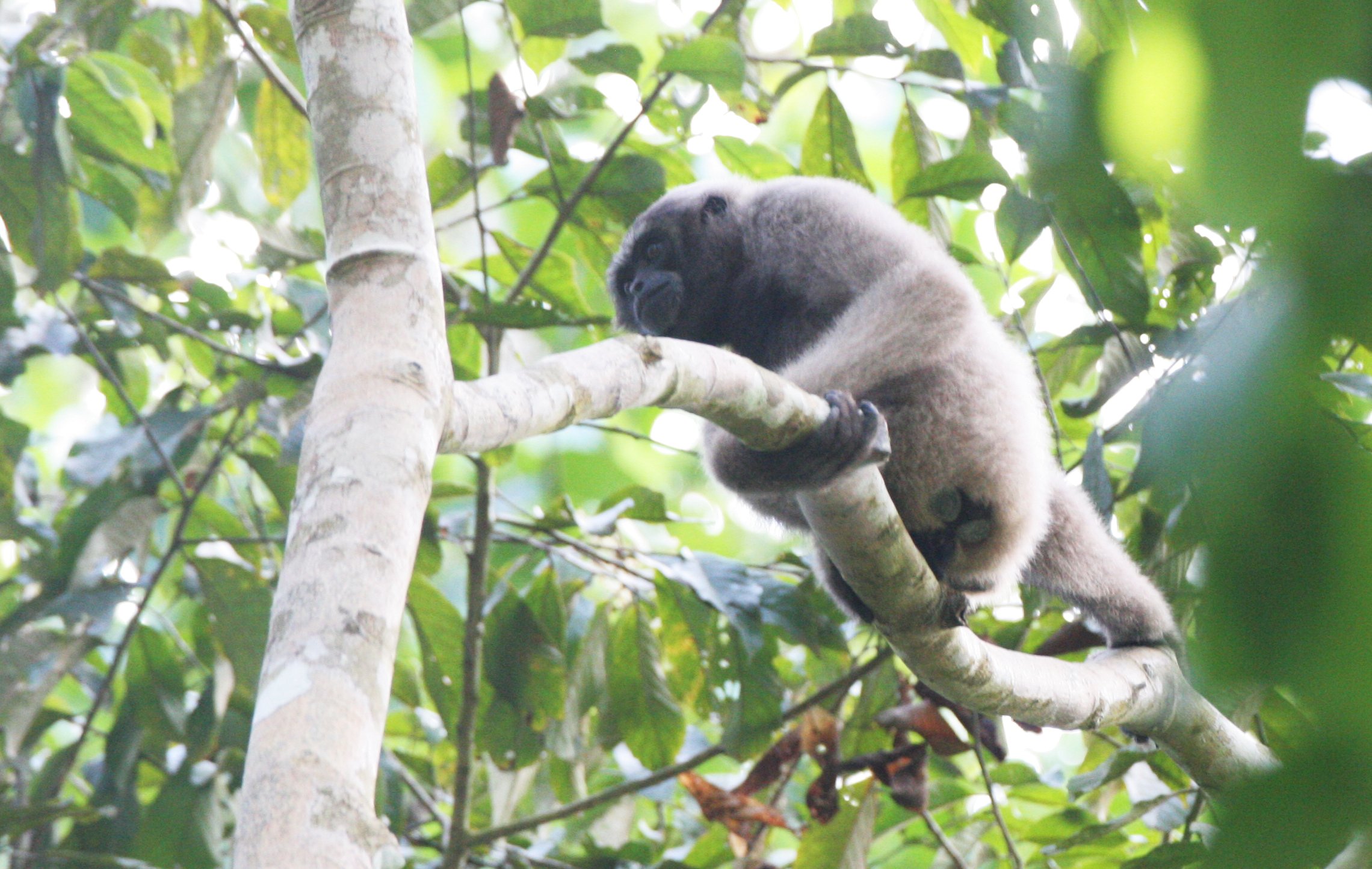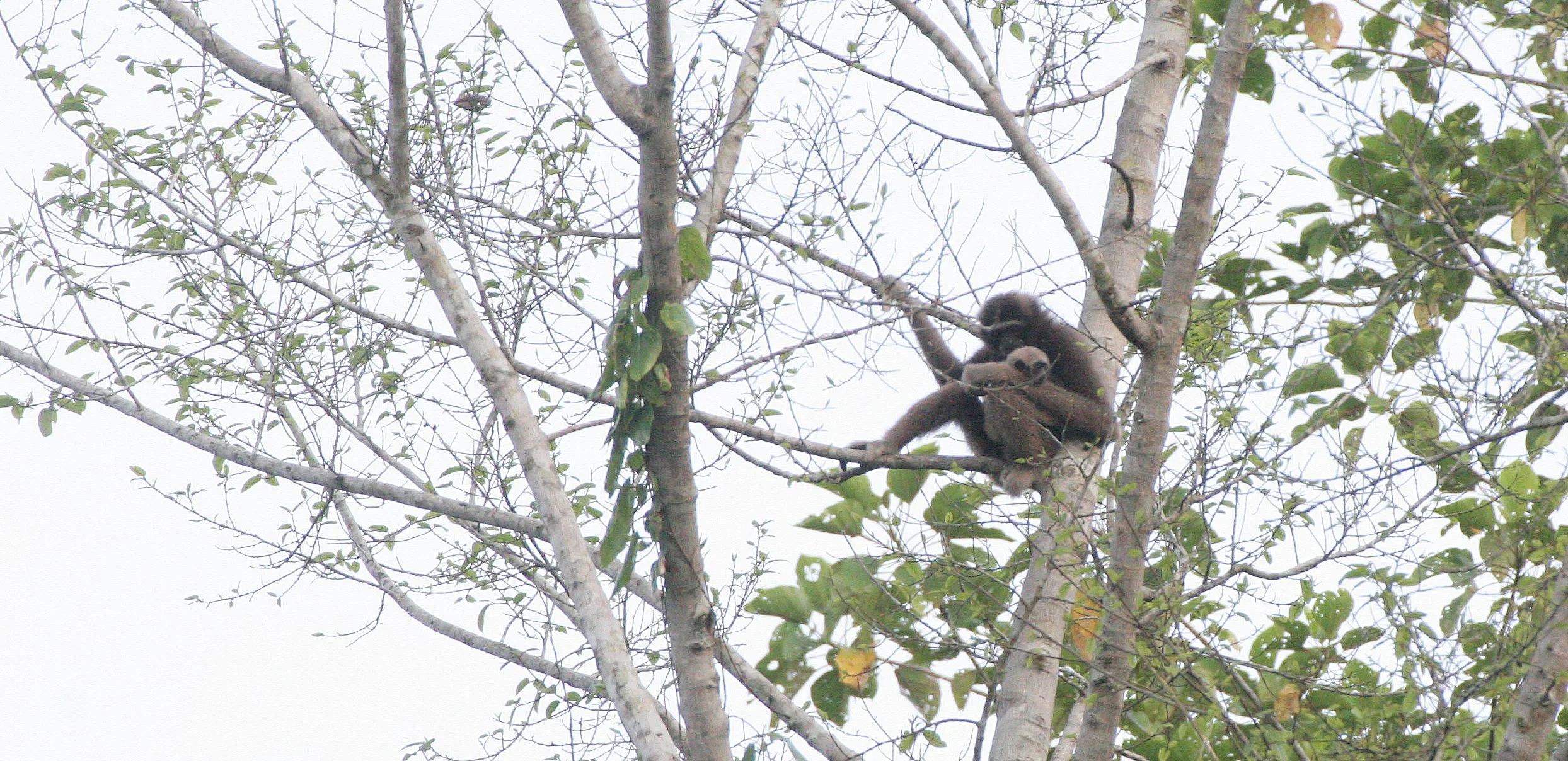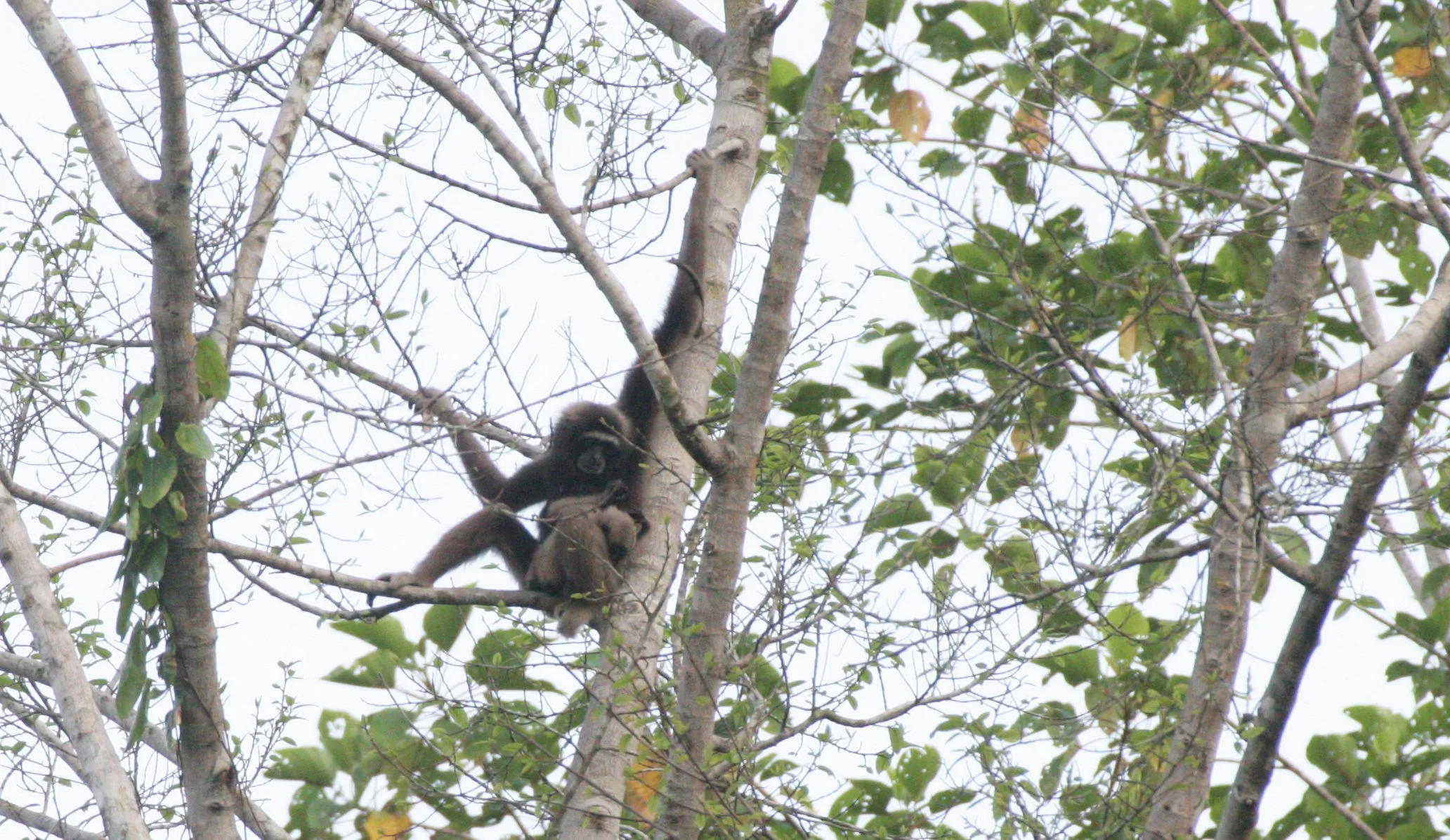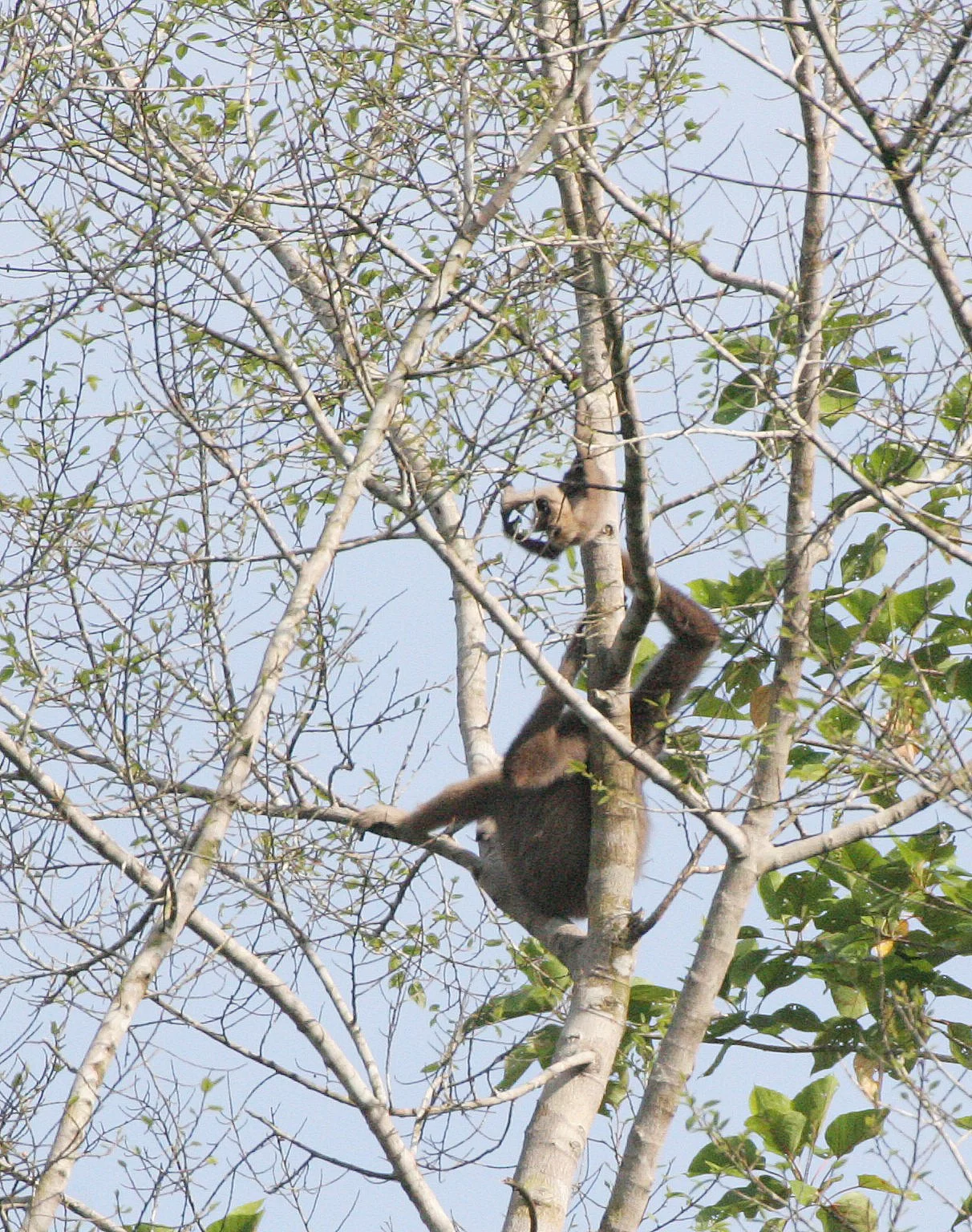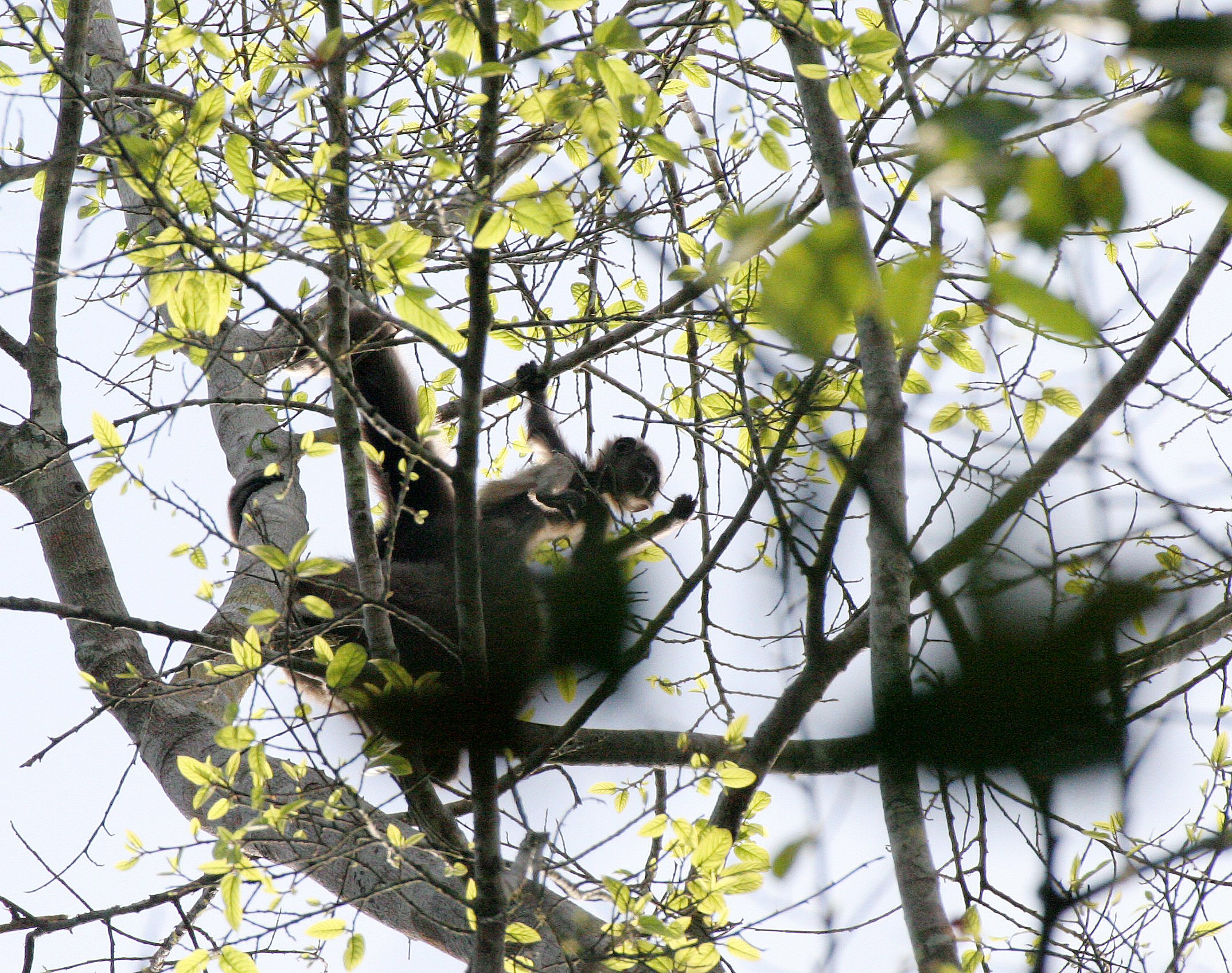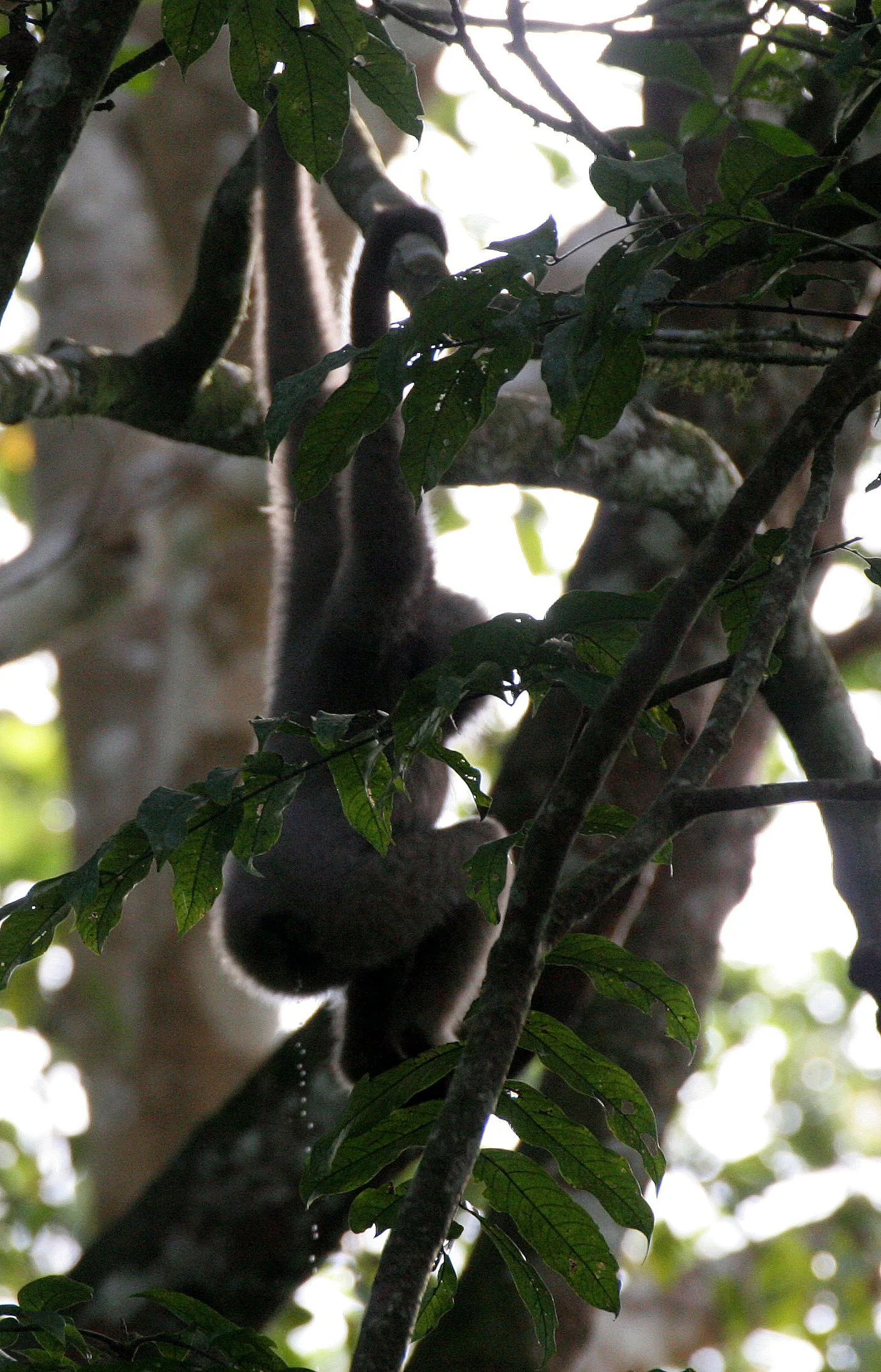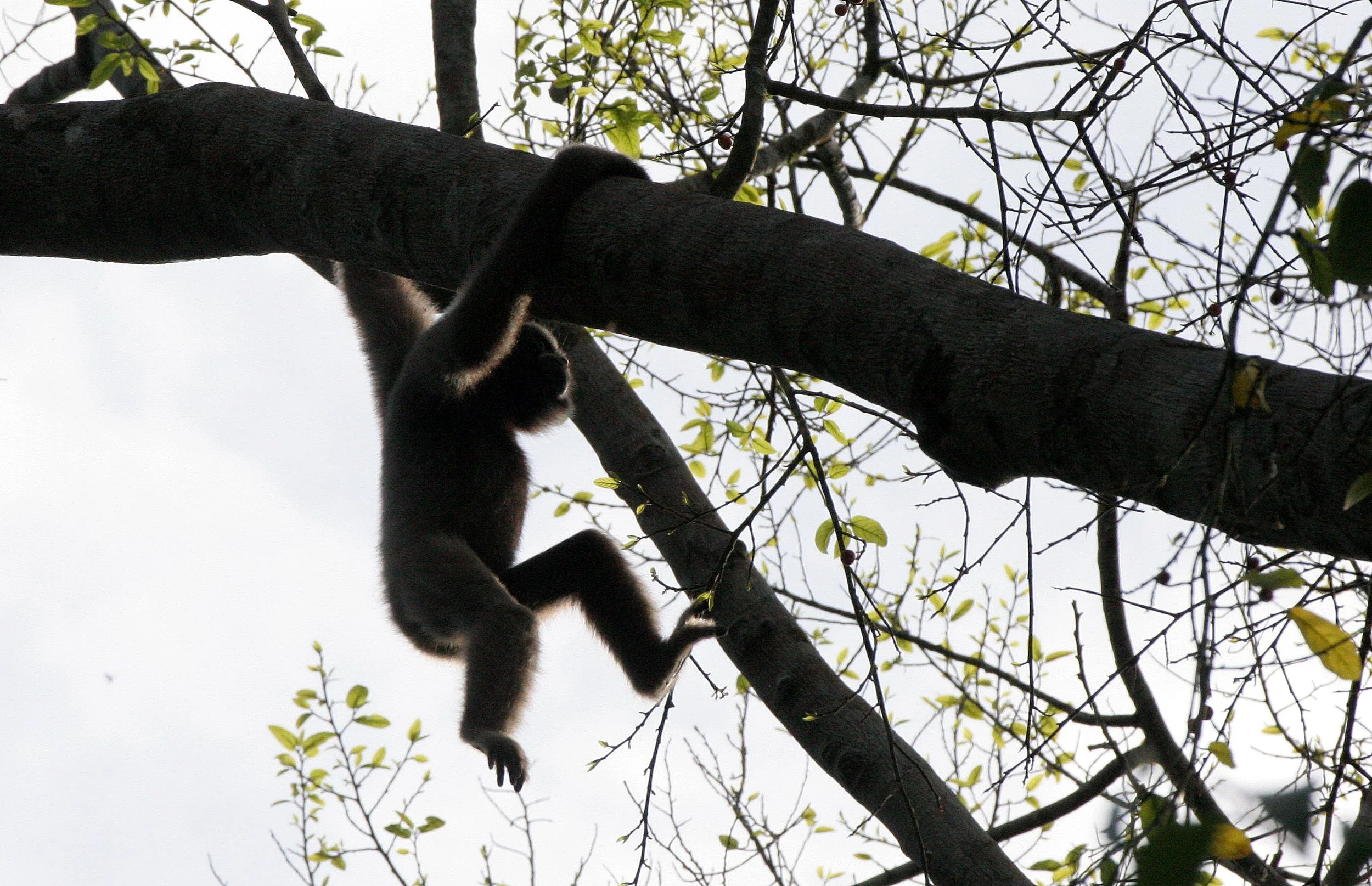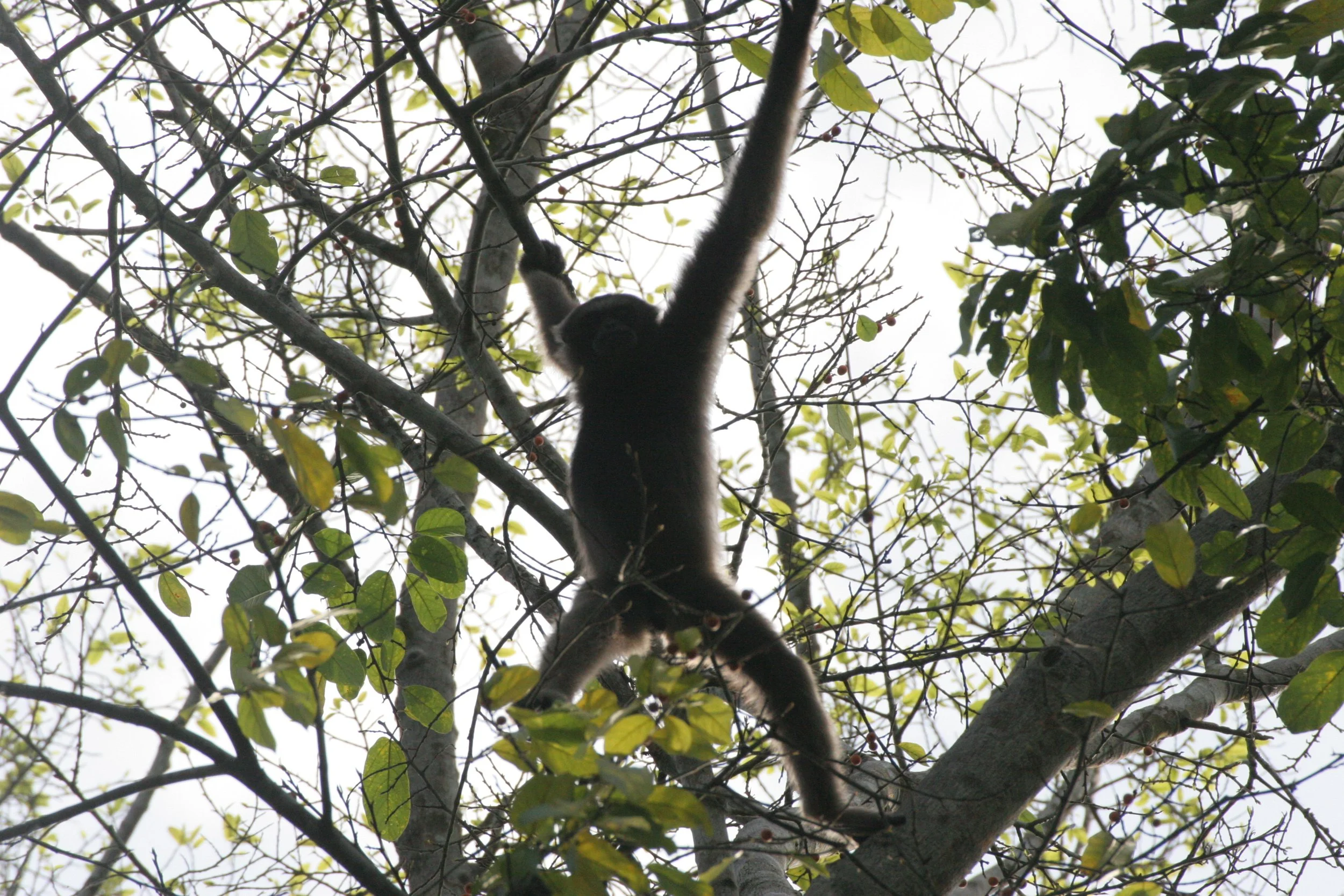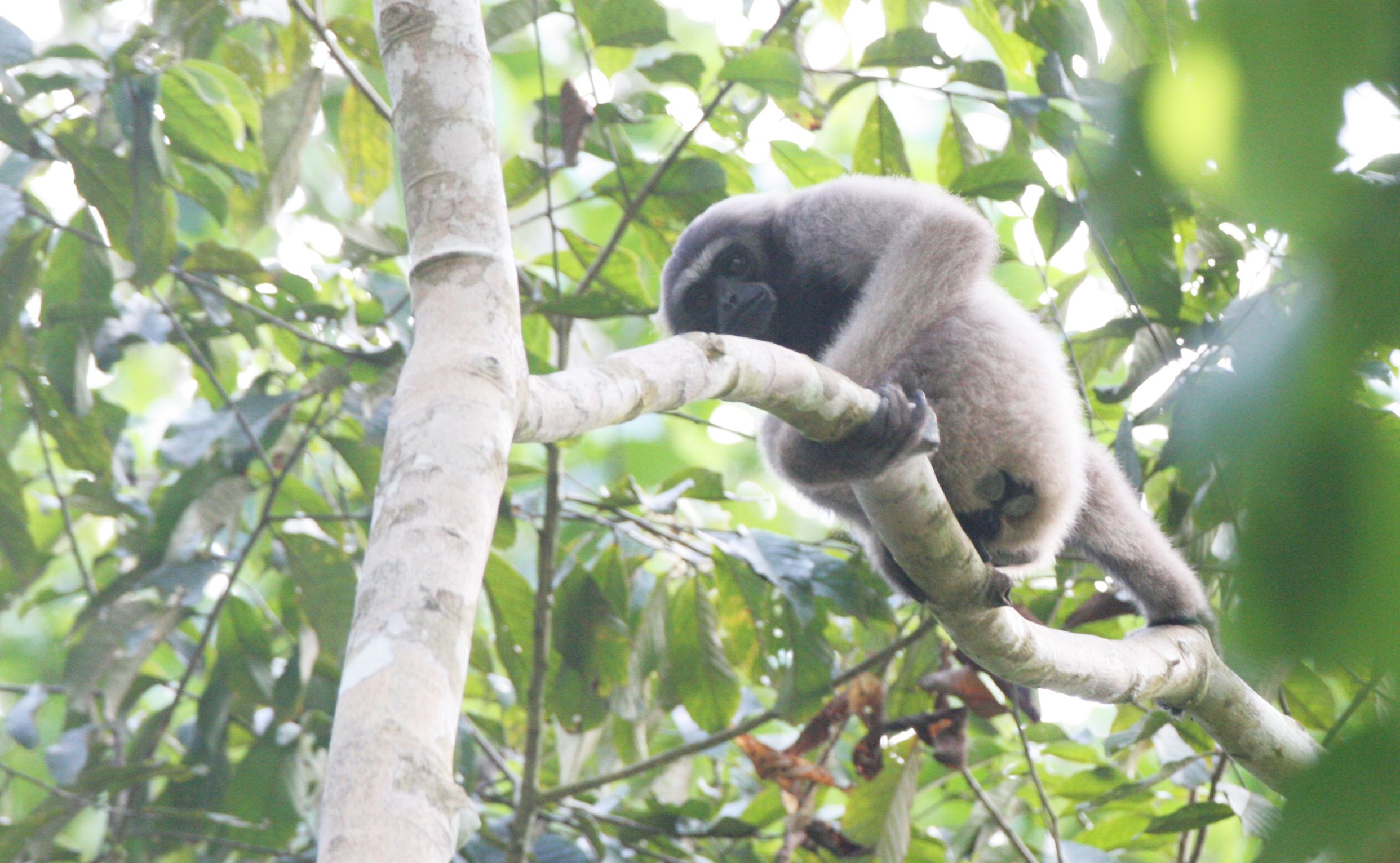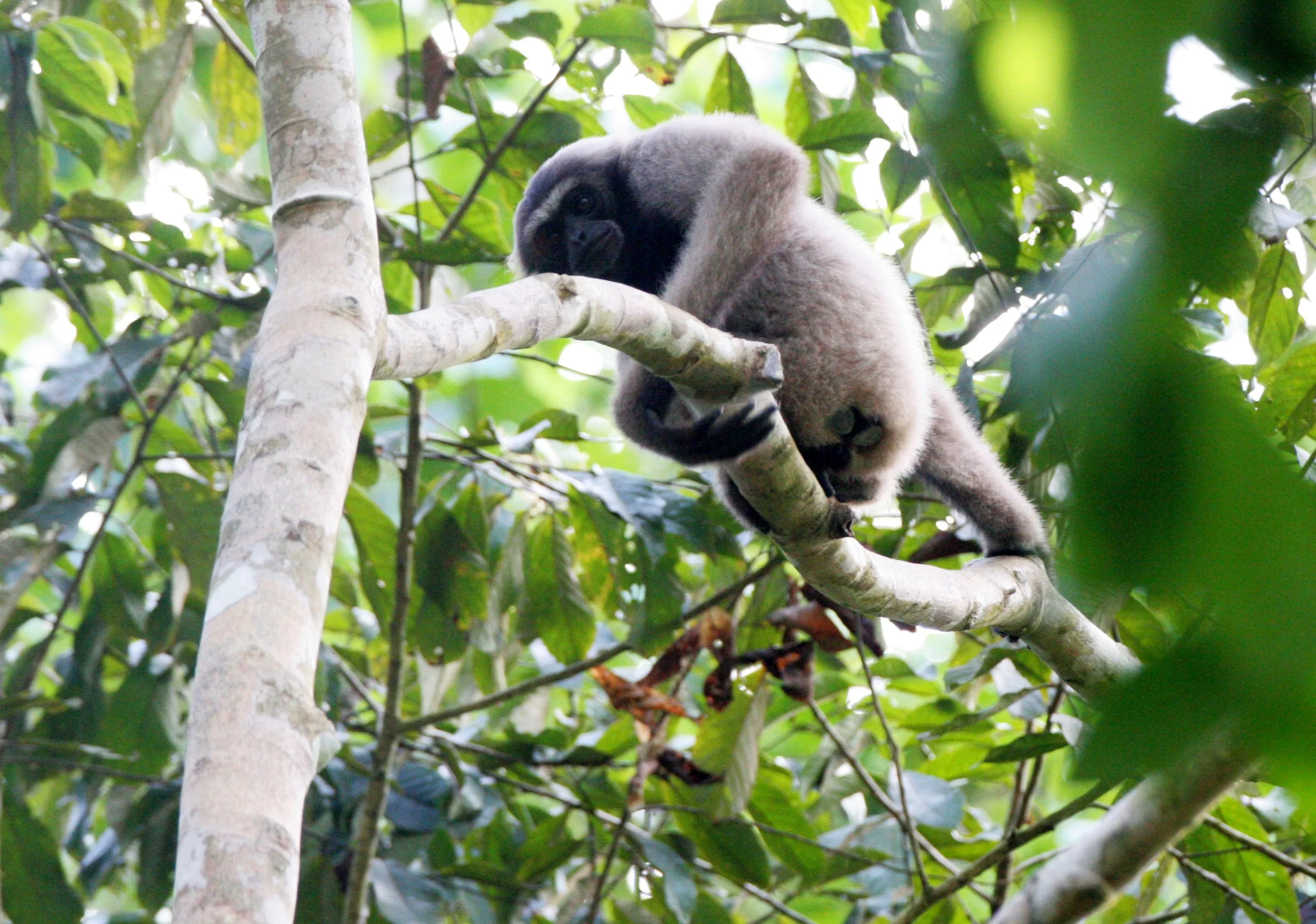Müller's gibbon (Hylobates muelleri), also known as the southern grey gibbon, is a primate in the gibbon family, Hylobatidae.
Formerly, the western grey gibbon (H. abbotti) and eastern grey gibbon (H. funereus) were considered conspecific with H. muelleri, but more recent studies indicate that all three are distinct species, and both the IUCN Red List and the American Society of Mammalogists consider them such.
Unlike most gibbon species, Müller's gibbon does not show sexual dimorphism in its fur coloration. Its fur is grey- or brown-colored with a ring of bright fur around its face. On the head, it often has a darkly colored cap. Weighing between 4–8 kg, it ranks among the smaller of the gibbons.
Müller's gibbon is endemic to Kalimantan in the island of Borneo, inhabiting the southeastern part of the island. It is found approximately south of the Mahakam River and east of the Barito River.
These images are from Tabin and are some distance from the Mahakam. The outward appearance of these individuals is very clear and identical to Muller’s Gibbons in all available literature and are completely different in appearance from the North Borneo Grey Gibbons seen in the northern and northeastern regions of Borneo. Although they fall outside of the distribution area on the map, I am keeping their species designation as Muller’s with the assumption that the region of overlap shown on the map is not complete and I do not accept that the river is sufficient enough of a barrier to cause speciation. The entire Bornean Gibbon assemblage of species is under dispute as well.
